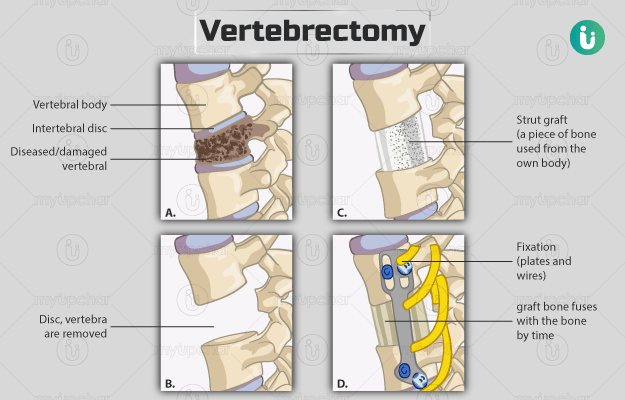The human spine (or vertebral column) is a structural and central support system of the body that keeps the body erect and upright. It is divided into four regions – neck region (cervical spine), upper and mid-back region (thoracic spine), lower back region (lumbar spine), and base of the spine (sacral spine) - and has 26 vertebrae (sequentially arranged small bones) that extend from the base of the skull to the base of the spine called the coccyx. The vertebrae are separated by intervertebral discs.
Each vertebra has a vertebral body on the anterior side and the vertebral arch on the posterior side. The spinal cord passes through a hollow centre between the vertebral arch and body. Now, the vertebral arch is made of various parts including a pair of transverse processes on either side and a single spinous process, which is a projection on the posterior end of the vertebral arch. The transverse process is connected to the vertebral body through two pedicles and to the spinous process through two laminae. Right between the lamina and the pedicles on each side of the vertebral arch are articular processes. There are about four articular processes in each vertebra. It helps connect two vertebrae togather.
some posterior projections and a body that has a hollow centre for the spinal cord to pass through it.
A vertebrectomy refers to the removal of all the posterior (backside) spinal components (the spinous process, lamina, and pedicles) and the vertebral body.
This procedure may be performed in the cervical, thoracic, or lumbar regions of the spine. The space that is created after this surgery is filled with an implant (synthetic cage or bone graft), and the spinal column is reconstructed. Additionally, spine-stabilising materials are inserted above and below the vertebra for stability and support.










































